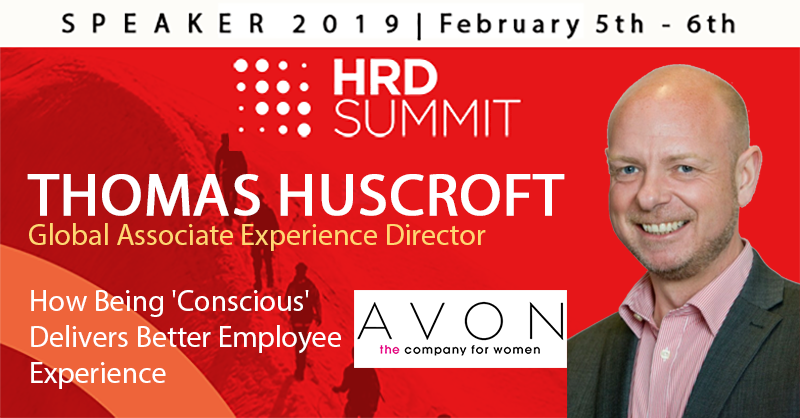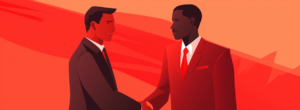Work in a ‘real time’ environment not a regulated one
- 4 Min Read
Thomas Huscroft, Director Global Associate Experience at Avon will be joining as at this year’s HRD Summit UK 2019. HRD Connect speak exclusively with him before the conference.
- Author: Emily Sexton-Brown
- Date published: Jan 3, 2019
- Categories

Thomas Huscroft, Director Global Associate Experience at Avon will be joining as at this year’s HRD Summit UK 2019.
He will discuss the importance of bringing information together to being more ‘real time’ in managing experience rather than the annual survey and plan.
It can be easy to lose sight of what is in the best interest for employees, but Thomas very much brings this to light. Here is an exclusive interview ahead of the event.

How do you believe being a ‘conscious organisation’ aids employee experience?
Being conscious of what your people think now and reconciling the feedback with current business challenges the environment and doing something about it delivers a better experience.
This isn’t just through annual surveys but at the moments that matter such as a new process, a life changing event or a job move as examples. Of course, you can’t always make things better; but you can recognise the issues and work through them.
How do you create a truly unique and engaging working experience, as well as environment?
Traditionally we tend to match the culture statements, survey results and the employer brand to come up with what we think is good for everyone.
“It’s like a jigsaw where people are different shapes and together you make the picture.”
However, it doesn’t make things any more engaging; it can just tick a box and in some way justifies what we are doing. All these things are very important and to bring them to life requires involvement and recognising what the constraints and limits are on what you can do and being honest about what won’t work.
It’s about being real just like our people.
How important is personalisation within this experience?
It’s impossible to create unique experiences for every individual; however, every individual is unique and has their own needs and wants; with an approach that looks at the experience and adds flexibility along with a good dose of involvement it allows people to personalise their experience for themselves within the parameters that everyone contributed to.
Being personal is about listening and recognising what people tell you and creating the environment where people can give and get what they need.
If you could create the perfect employee experience, what would it look like?
This has two elements; personal satisfaction and business performance – the two must go together.
To gain personal satisfaction, the business, role and environment all need to mean something to the employee and that they can see their contribution isn’t only recognised but means something to make a difference to the performance of their role and the business.
It’s like a jigsaw where people are different shapes and together you make the picture.
What are your key challenges you face?
A global organisation isn’t known for its consistency; however, it needs an over-arching framework that works.
Each country and aspect of the organisation has its nuances and local requirements. That’s fine as it helps people achieve some level of personalisation and helps people feel that they belong.
“Culture and work environments take time to evolve and you can’t do that in an engagement cycle timeline. However you can involve people, what’s needed now and in the context of the business challenges and changes keep a firm eye on the future.”
Scale, time zones, business performance and changing priorities are all challenges but not the reason to do very little or nothing. Perfection should never slow down or get in the way of good and I think we are all guilty of that.
What would you like to see change in the future?
More honesty about roles and how people fit into them – the give and the get for the individual and the employer must be right for both of them.
Culture and work environments take time to evolve and you can’t do that in an engagement cycle timeline. However you can involve people, what’s needed now and in the context of the business challenges and changes keep a firm eye on the future.
Can you highlight anything else you’re looking to cover in your talk at the conference?
The importance of bringing information together to being more ‘real time’ in managing experience rather than the annual survey and plan.
Taking the HR data, measurements of satisfaction through surveys and a good dose of involvement contributes far more than an action plan ever would do.
For more information about the Summit, or what Thomas will be discussing, look here.








